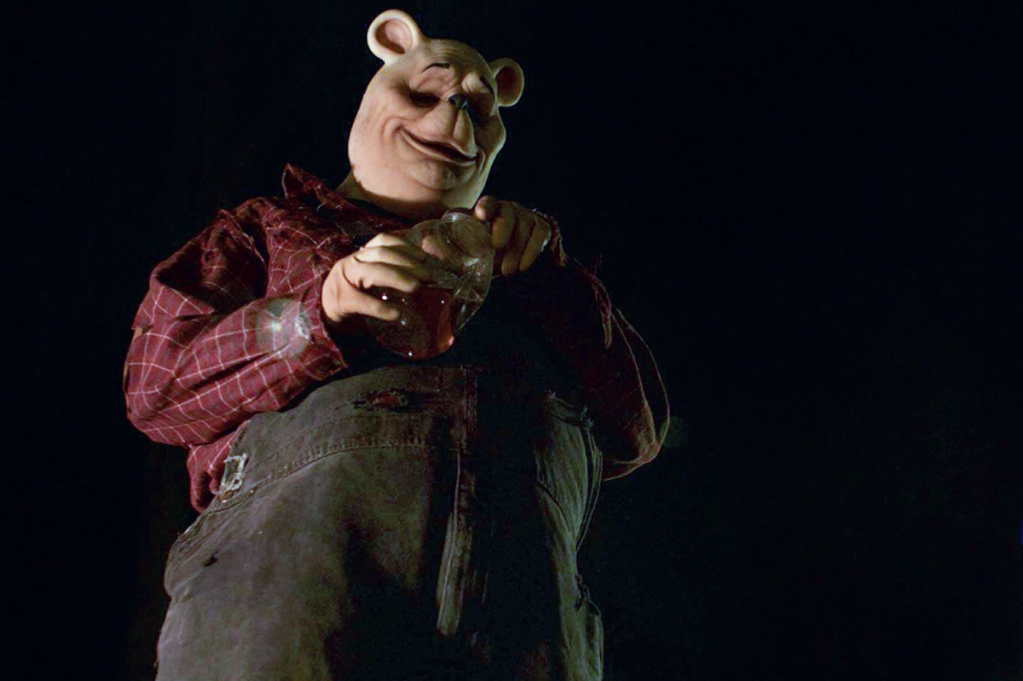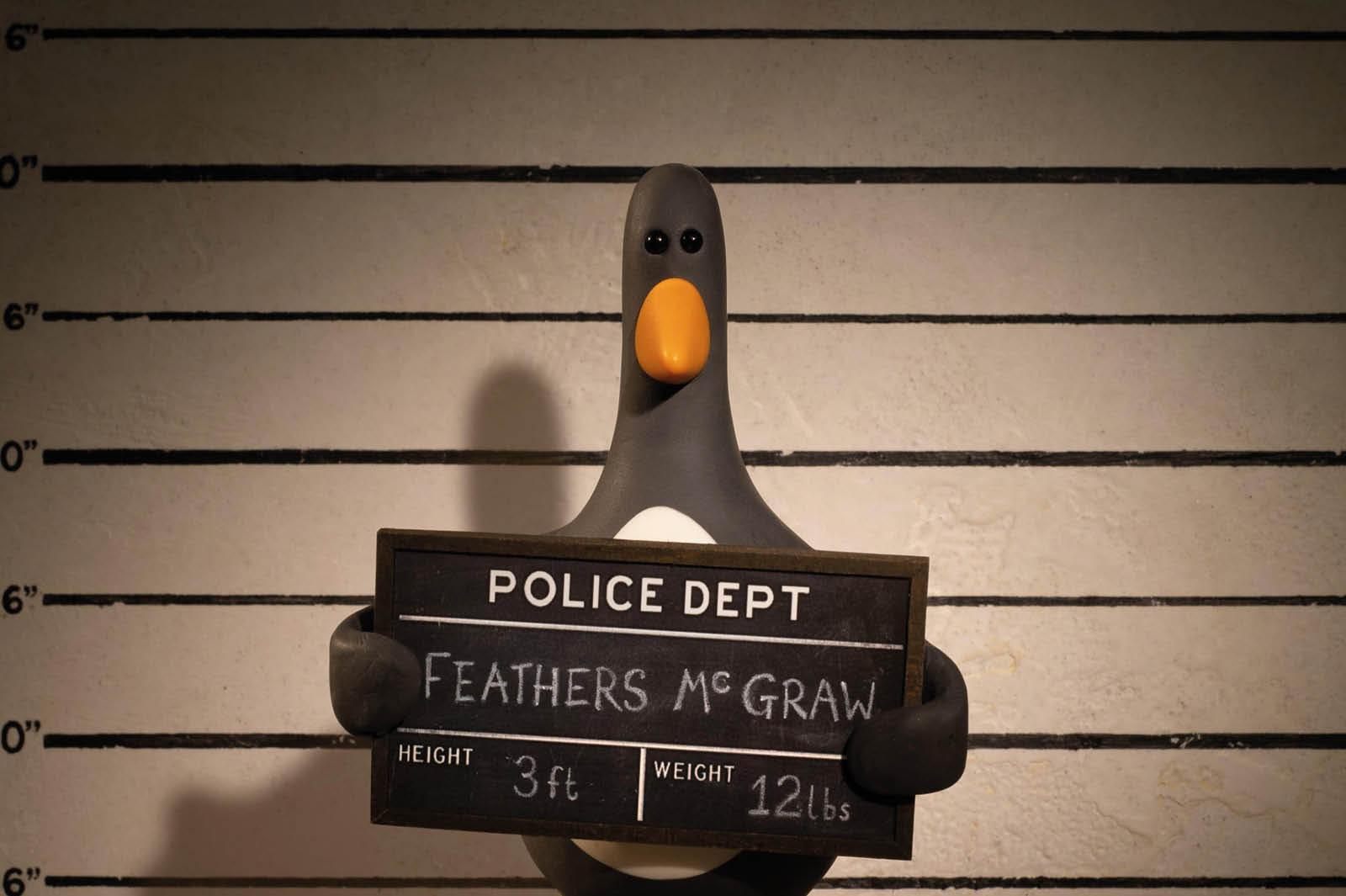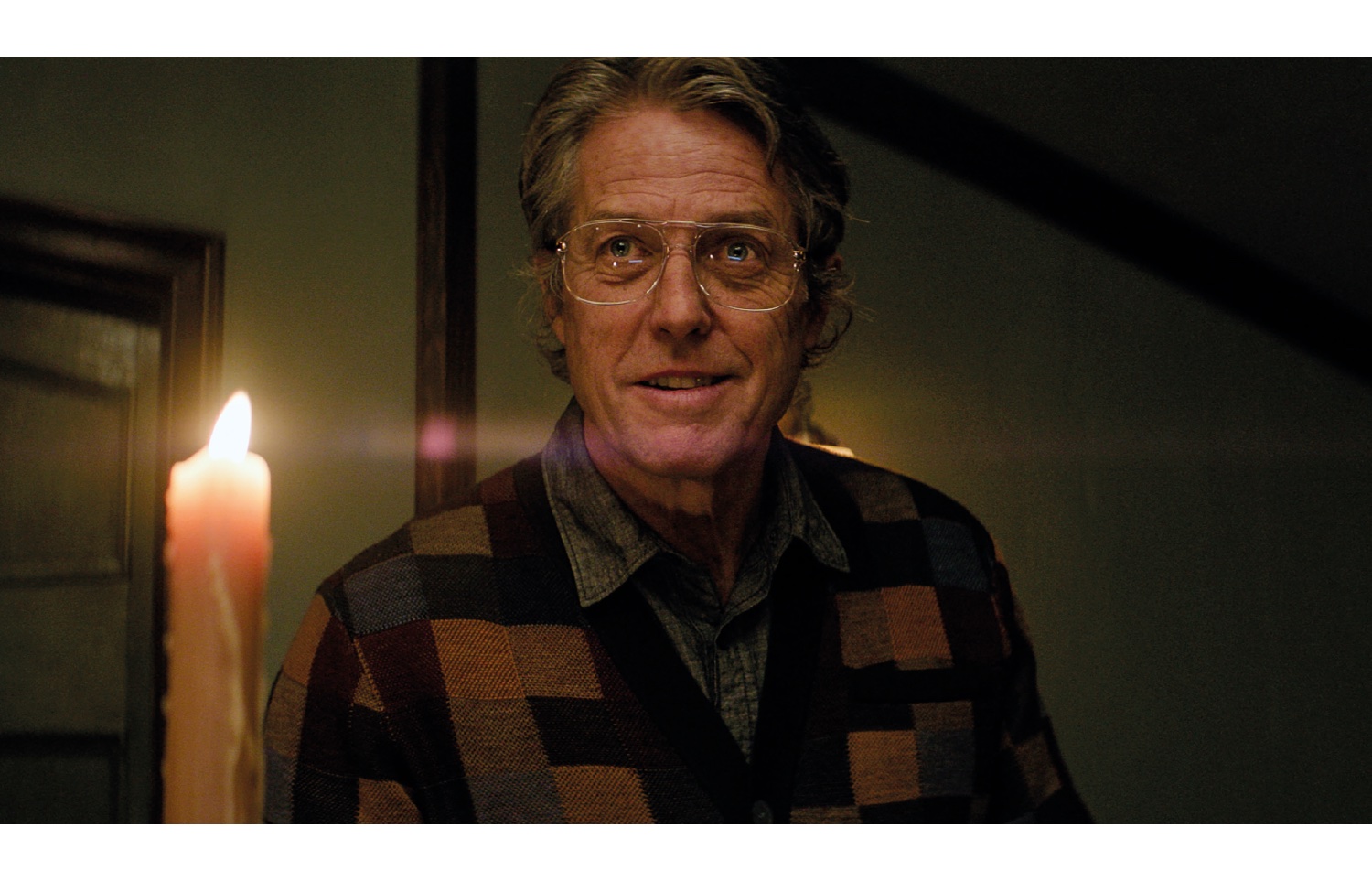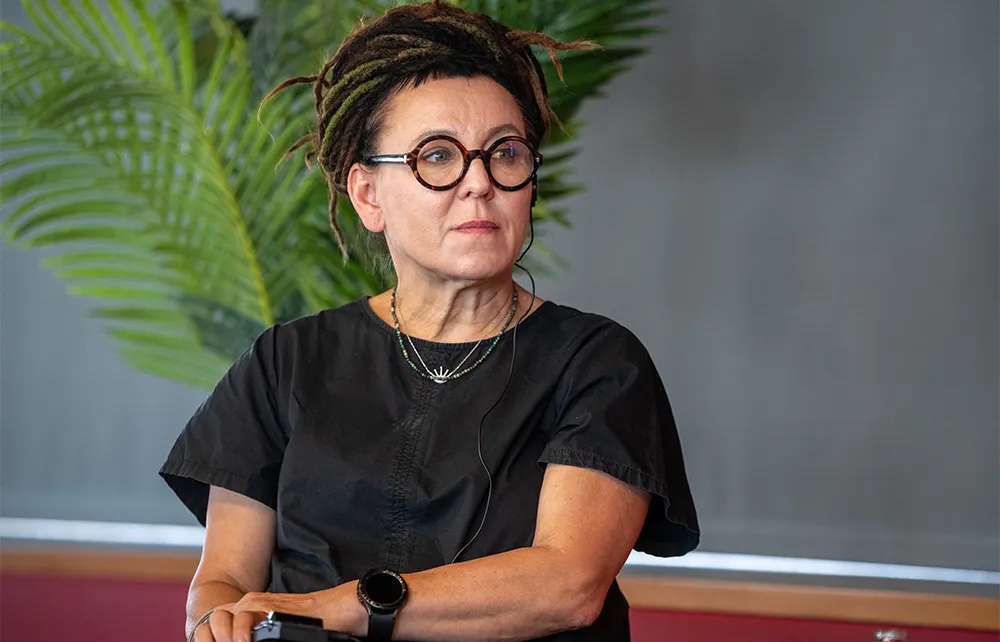If there’s a phrase that captures the frantic energy of the modern British B-movie, it’s the concept of the “heart attack shoot.” And Rhys Frake-Waterfield knows more about it than most.
“It’s not unusual to spend more than twelve hours on set,” says the happy-go-lucky thirtysomething director during a short break from promoting his new low-budget slasher. The breakneck pace means that the shooting of an entire feature can be wrapped up in weeks, thus ensuring the project is as cheap as possible.
Cutting corners is a necessity. “On Winnie the Pooh, we tried to save time by not reshooting any scenes,” he says. “Unless the actors made a really glaring mistake, we would just stick with the first take.” True to the old B-movie ethos of the 1960s, the focus is on bringing the product to market at ungodly speed.
If you’ve been on YouTube recently, you may have seen a trailer for Frake-Waterfield’s Winnie the Pooh — or Winnie the Pooh: Blood and Honey to give it its full name. More than 15 million people have viewed the viral trailer, in which an adult Christopher Robin returns to Hundred Acre Wood with his university girlfriend, only to find that his childhood companions have morphed into bloodthirsty assailants dressed in Slipknot-like boiler suits.
Like the B-movies of yesteryear, Blood and Honey is deliberately kitsch. But Frake-Waterfield insists the film isn’t meant to be a joke. Which is just as well, given that it may be on the verge of becoming one of the most successful underdog films in history — at least in terms of profitability.
‘Last time I looked, box-office sales were about £5 million ($6 million) — although that’s without any of the US cinemas,” he says. Not bad, then, for a film that cost “much less” than £100,000 ($122,000 to make (like most B-movie directors, Frake-Waterfield doesn’t disclose his entire budget, though he proudly tells me that initial filming cost just £23,000 ($28,000) and took only eight days).
Blood and Honey might be the most successful modern B-movie released this year, but it’s far from the only one. In a typical year, otherwise unknown directors across the UK pump out dozens of low-budget — yet often commercially resilient — films, typically working across three genres: horror flicks, gangster films and modern-day westerns.
While many of these films are made on shoestring budgets — almost always less than six figures — they have a number of things in their favor. Like more mainstream franchises, many of these B-movies command loyal — if niche — fan bases that can greatly lower the risk of a commercial misfire. Which means distributors are willing to put up cash in advance.
Take the independent gangster-film market. After a procession of testosterone-laden films about soccer hooligans became unlikely hits in the early 2000s, enterprising producers responded by flooding the market with cheaper imitations. Thanks to a savvy marketing strategy — including gaming the supermarket DVD charts and securing cameos from minor celebrities — many managed to make money.
Films about real gangsters did particularly well. Over the past fifteen years, there have been eight full-length films (the latest of which comes out this year) about the “Essex Boys” — a notorious trio of ecstasy-pushers whose eventual murders became British tabloid gold in the 1990s. The limited source material meant that many of the films were reduced to retreading the same folklore — a tactic reminiscent of the Gospels. But fans lapped them up regardless.
B-movie horror directors, meanwhile, benefit from a healthy indie scene playing to nerds across the UK. At this month’s Glasgow FrightFest — now in its eighteenth year — Winnie the Pooh: Blood and Honey was the main feature, beating a Lithuanian slasher flick to the top spot.
It helps that B-movies benefit from widespread tax incentives — the result of a string of governments keen to turbo-charge Britain’s creative industries. Some of the schemes are notoriously generous, like the Seed Enterprise Investment Scheme, which lets backers deduct much of their investment against their income tax (although this has been tightened in recent years).
From time to time, less scrupulous operators have pushed these to the limit. Ten years ago, a gang of five associates were jailed for an audacious VAT fraud after massively inflating the costs of their film to cheat the UK Treasury out of more than £3 million ($3.6 million). On paper, the film had cost nearly £20 million ($24 million); in reality, it had cost less than 10 percent of that.
Of course, tax perks alone aren’t enough to make a film profitable. Instead, the most successful B-movie producers engage in an almost Darwinian pursuit to find new ways to cut costs — and then roll these out across future projects. “There’s definitely a creative genius to it,” says one assistant director, currently recovering from a spell on a heart attack set.
This highly competitive approach can be a barrier to newcomers. “I definitely made a few mistakes I won’t be repeating in future,” says Patrick McKnight, whose debut feature The Irish Mob — made for less than £100,000 — was released in the UK this month. “We shot a lot of scenes with actors wearing branded clothes, for example. Which meant I had to spend months in post-production tweaking the logos in every shot.”
One common trick to keep budgets down is to blag freebies where possible. “It was literally beg, borrow or steal — well, not steal as such but you know,” says McKnight. “A friend of mine is an estate agent so he was able to find an office we could shoot in on weekends, when the tenants weren’t using it.” Did they pay for any locations? “Not that I can remember.”
As you can imagine, missteps do occur. Last year, an independent film-maker caused a stir in Great Yarmouth — my hometown and no one’s idea of a creative hotspot — when he descended on the seaside town to make an independent gangster film called Hit Men. Months later, local Facebook groups were awash with traders and businesses claiming to have been left out of pocket (or worse) after supporting the project.
“They were a complete bunch of cowboys,” ranted one landowner, claiming that he returned to his property to find piles of trash everywhere and a number of his second-hand cars damaged. Other suppliers — including jobless locals offered roles as runners and junior production staff — say they weren’t paid. Attempts to chase up accounts have proved unsuccessful: not least because the company is registered to a vacant office block in Great Yarmouth.
For his part, the film’s producer admits that mistakes were made, laying the blame at the feet of a distributor who pulled out of the project, leaving a cash shortfall. He insists that — as with his previous films — any suppliers will be paid when a replacement distributor is in place (at the time of the writing, Hit Men is still awaiting such a deal).
Who would buy a film like Hit Men? You might be surprised. For all their Oscar-chasing pretensions, the big streaming services have proved partial to British B-movies. In 2021, Netflix quietly added two indie films made about the infamous Kray twins to its catalogue. Both are pitifully low-budget and have been panned by critics, but that isn’t the point.
Netflix knows better than anyone that there’s a market there: after all, one of its most streamed films, Legend, is about those same Krays. It might be a £20 million-blockbuster starring an A-list actor — and thus a world away from the B-movie imitations — but there’s nothing to stop its all-powerful algorithms pushing the cheaper films on viewers who have watched Legend and are in the market for another fix.
After the cinematic success of Winnie the Pooh: Blood and Honey, Frake-Waterfield remains confident that his work will end up on a streaming network before long (“Although we can probably rule out Disney+,” he adds). Like most B-movie directors, though, he’s already turning his attention to his next film. When completed, it will be his thirty-fifth.
“Thanks to the buzz around Blood and Honey, we’re going to have ten times the budget next time,” he says. “Probably more than that.” For the B-movie scene, things are looking up. In the streaming age, film-making is more of a numbers game than ever, and there are plenty of directors who like those odds.
This article was originally published in The Spectator’s UK magazine. Subscribe to the World edition here.





















